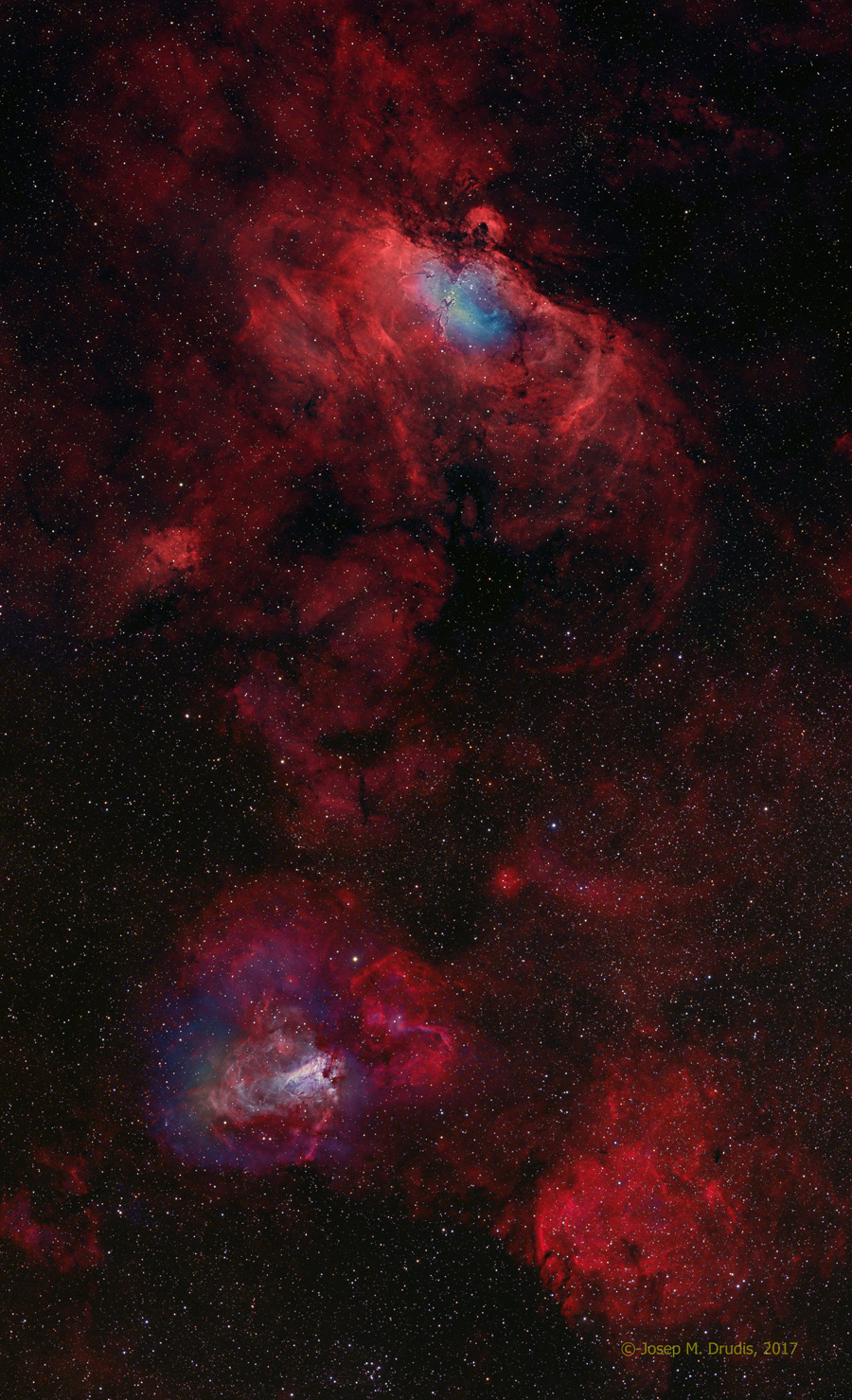more »
The Eagle Nebula and the Swan Nebula span
this broad starscape, a telescopic view toward the
Sagittarius spiral arm and the center of our Milky Way galaxy. The Eagle, also known as M16, is at top and M17, the Swan, at bottom of the frame showing the cosmic clouds as brighter regions of active star-formation. They lie along the spiral arm suffused with
reddish emission charactistic of atomic hydrogen gas, and dusty dark nebulae. M17, also called the Omega Nebula, is about 5500 light-years away, while M16 is some 6500 light-years distant. The center of both nebulae are locations of well-known
close-up images of
star formation from the Hubble Space Telescope. In this mosaic image that extends about 3 degrees across the sky, narrowband, high-resultion image data has been used to enhance the
central regions of the Eagle and Swan. The extended wings of the Eagle Nebula spread almost 120 light-years.
The Swan is over 30 light-years across.
Zazzle Space Gifts for young and old
